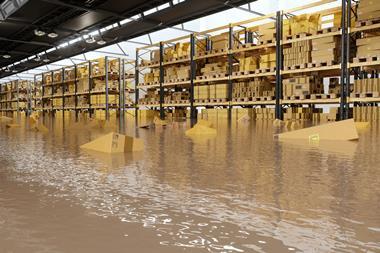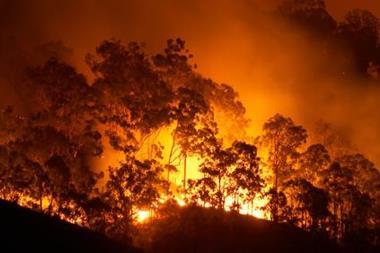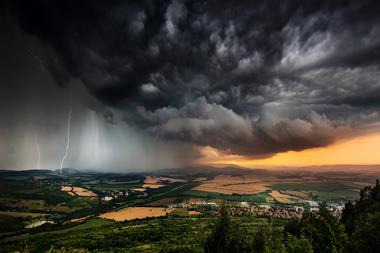As the intensity of heatwaves, storms and floods speeds up, so do the time horizons for rising global instability
As the extreme weather events the world is already experiencing become more frequent, they will trigger a cascade of these second-order climate risks across a huge swathe of countries, warns a Verisk Maplecroft report.
According to its research assessing the susceptibility of countries to cascading risks, economically and geopolitically strategic nations such as Brazil, Mexico, Vietnam and Russia are in a dangerous position, in addition to countries in Asia and Africa that will bear the brunt of the impact.
Even China could find itself under pressure if change continues to accelerate. If countries like these succumb to extreme bouts of climate-induced instability, the knock-on impacts could overwhelm economies and populations across the globe.
Organisations and governments are beginning to create extensive mitigation plans for physical climate threats, yet the low levels of investment in looking at the secondary risks show that most are almost entirely unprepared to deal with the wider political, economic and developmental impacts of a warming planet.
As the intensity of heatwaves, storms and floods speeds up, so do the time horizons for rising global instability.
Identifying where these impacts will become most prevalent – and which countries are most at risk – is vital in managing cascading threats for organisations aiming to reinforce their long-term resilience and for governments looking at external factors threatening their own interests.
Insulated or vulnerable?
The most ’insulated’ nations, like the US, Japan or the UK, balance out climate threats through strong governance, low levels of conflict, robust social policies, and their ability to provide sufficient food and comparatively high-quality infrastructure. ‘Vulnerable’ countries lack these safeguards.
‘Precarious’ countries’ average exposure to climate risk is closer to that of ‘vulnerable’ countries than their ‘insulated’ counterparts.
While they share some of the safeguards seen in ‘insulated’ countries, these protections are often less robust.
Small shifts in these categories could easily see these ‘precarious’ countries tumble into the ‘vulnerable’ group – hence their name – increasing the threat of cascading climate risks affecting the populations, investments, business operations, and supply chains located there.
Companies able to predict where climate-related instability will occur will be better equipped to protect investments, bring in mitigation measures or even switch suppliers, avoiding costly disruption or reputational issues.
Dependency on agriculture is a key factor in a country’s susceptibility to cascading climate risks. Brazil’s coffee, sugar cane, beef and soy industries attract huge investment from overseas, making them critical to the economy, but they are also highly sensitive to climate shocks and longer term climate change.
Mexico’s risk profile is a near match for Brazil. While Mexico is a ‘precarious’ country, climate risk here is significantly greater than the average across the ‘vulnerable’ cluster, driven by acute water stress.
Geopolitical shockwaves
It is not difficult to see why countries burdened with poor governance risk factors might want to focus attention outside their borders if migration, civil unrest, and human rights abuses at home are exacerbated by climate change.
Equally, it would be tempting to relieve domestic shortages of land, minerals, food, or water by seizing a better-placed neighbour’s resources, potentially sending them spiralling into a crisis, notes Maplecroft.
War-ravaged Ukraine serves as an example of how conflict will exacerbate the susceptibility of a ‘precarious’ country to cascading risks.
Currently, it shares 35% of traits with the ‘vulnerable’ group but it is difficult to see how the ongoing conflict with ‘precarious’ counterpart Russia will do anything but lower its resilience further.
China’s relatively strong scores in economic and health factors are currently maintaining its safeguards. However, negative shifts in political or societal risk could see its susceptibility to cascading climate risks climb.
There are established links between warmer temperatures and increased levels of unrest; throw in urban population surges and then a recurrence of the type of protests seen in Hong Kong is a real possibility.
Such large-scale events would have the potential to severely disrupt Western supply chains and stymie the country’s economic output. A heavy-handed response from authorities and security forces to large-scale civil unrest would also be all but inevitable.
Putin exposed as Ukrainian forces recapture more territory
- 1
- 2
- 3
- 4
- 5
- 6
- 7
- 8
- 9
- 10
- 11
- 12
- 13
- 14
- 15
- 16
- 17
- 18
 Currently reading
Currently readingWorld ‘unprepared’ for magnitude of cascading climate risks
- 19








































No comments yet